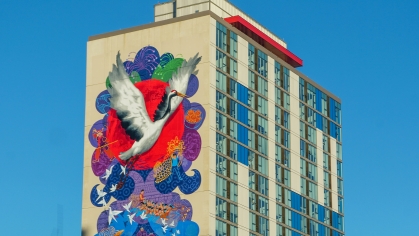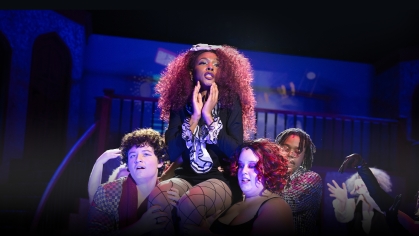Camden Students Unveil Gallery Exhibitions Created via Rutgers–Camden Center for the Arts’ Museum Mentorship Program
For the past three years, the Rutgers–Camden Center for the Arts has led an innovative project at four Camden schools, funded by an Arts Education Special Initiative Grant from the New Jersey State Council on the Arts.
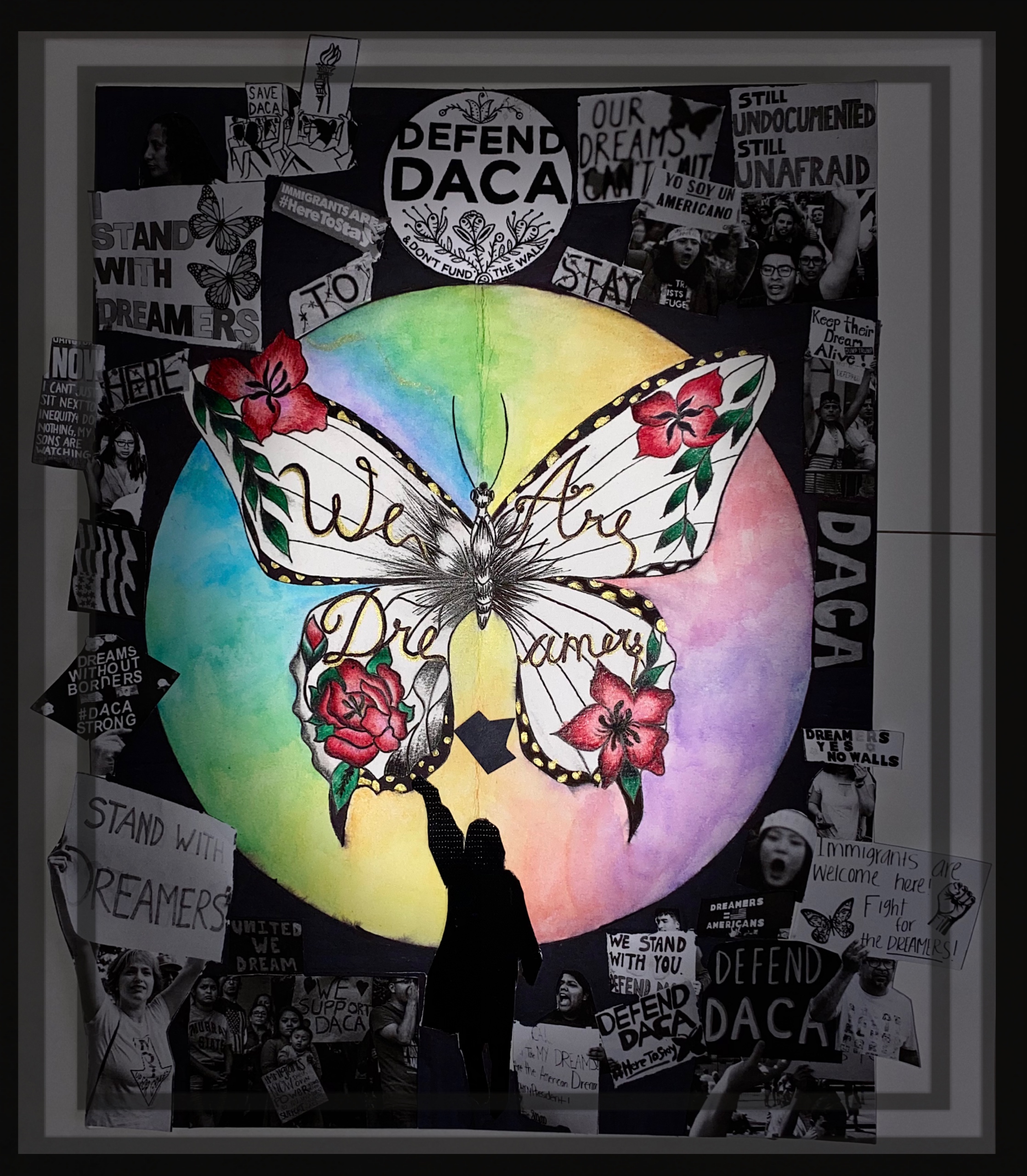
Madizon, Brimm Medical Arts High School - We Are Dreamers
A lot in life has changed since the program’s outset. A year of the COVID-19 pandemic and a national focus on social justice have had a profound effect on the Camden youth, and it shows – through posters, digital collages, and poems, among other creations.
“All of the schools switched gears with their exhibition themes after COVID-19 and the summer of social justice awareness hit the country,” explains Miranda Powell, arts education and community arts program assistant for the Rutgers–Camden Center for the Arts. “You see that very much reflected in their work.”
The students – from Brimm Medical Arts High School, Thomas H. Dudley Family School, Holy Name School, and U.S. Wiggins College Preparatory Lab Family School – have now put the final touches on their exploration into the fascinating and multifaceted world of art, not only as aspiring artists, but in the many supporting roles as well.
Despite the switch to virtual learning, the students continued preparing for their goal: to curate, design, and install their own exhibitions in the Stedman and Camden Fireworks galleries in May 2021.
Virtual Exhibitions:
“Many school populations struggled during the pandemic and virtual learning,” says Powell. “As a result, we were as accommodating as possible to make sure all of the students maintained a connection to the Museum Mentorship Program in some sort of meaningful way.”
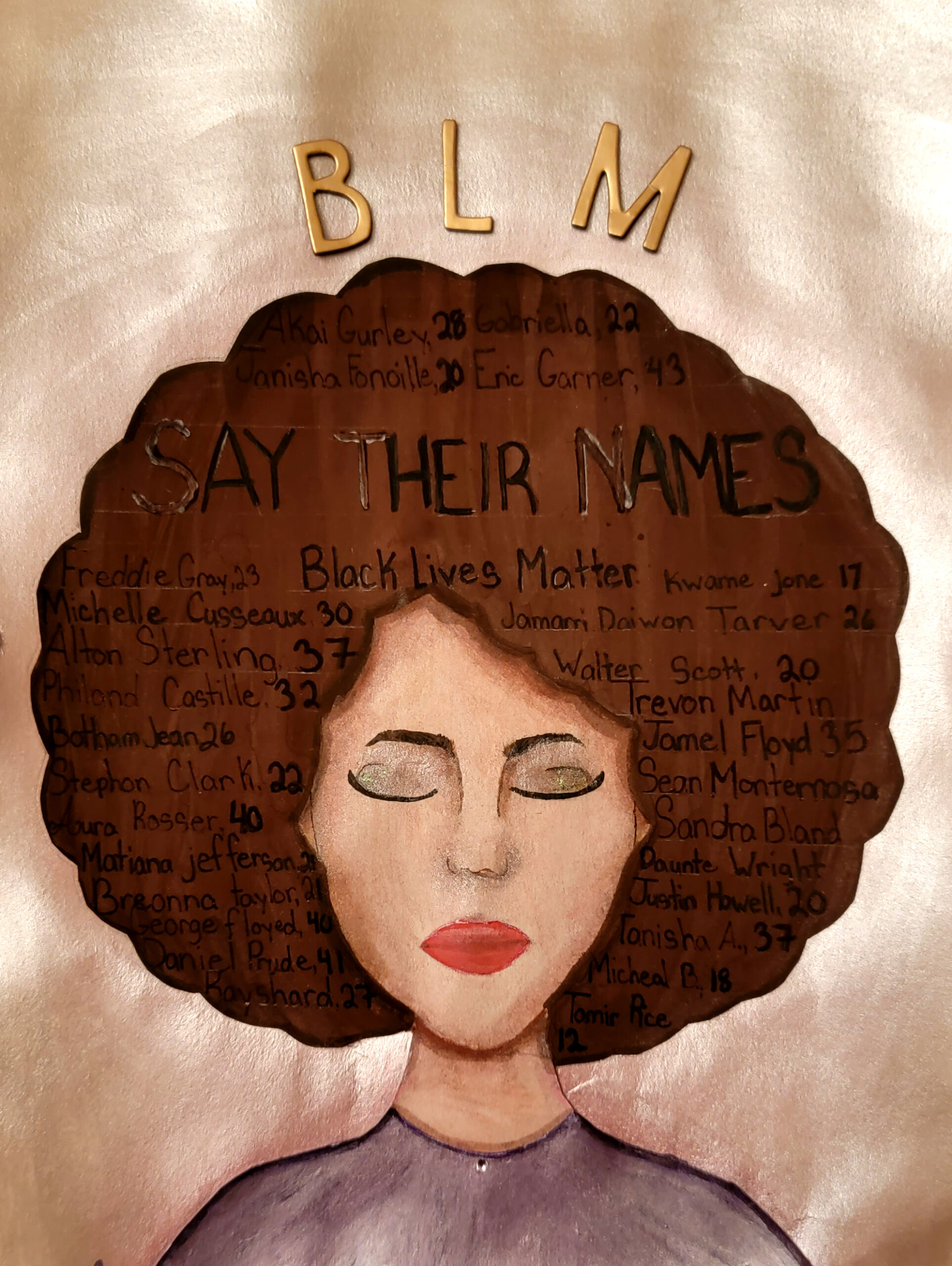
Liz, Holy Name School
At Brimm, Dudley, and Holy Name schools, the RCCA brought in teaching artists to lead multiple virtual sessions in order to help students hone their visions and themes, and create their final pieces of artwork.
Brimm held virtual sessions with teaching artist, photographer, and A New View – Camden artist Erik James Montgomery, who introduced students to the methods of creating “artivisim” after the 12th grade group expressed an interest in shifting their exhibition to explore themes of social justice.
Holy Name School likewise wanted to help their participating 5th to 8th grade students acknowledge their interests in issues of social justice, including the Black Lives Matter movement, immigration, and how COVID-19 impacted students. They worked with teaching artist Hollis Citron to learn how to express their ideas through poster design.
Dudley Family School students entered the 4th grade this year and remained on the path of their previous exhibition theme: cultural and family identity. Working with their art teacher, Barbara Gail, as well as visual artist Doris Noguiera-Rogers on special sessions in collage, and poet Anndee Hochman, the youngest students in the Museum Mentorship Program created digital collages and poems expressing their identities through Google Draw.
At Wiggins, the RCCA adapted the program by leading after-school drawing and painting sessions virtually.
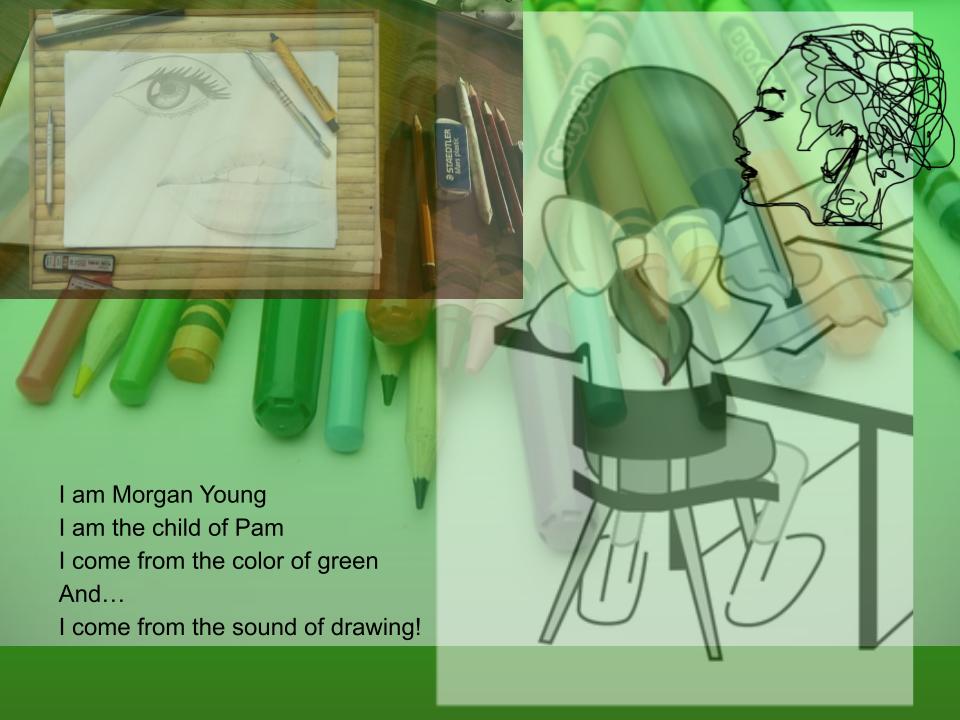
Morgan, Thomas H. Dudley Family School
The RCCA is now in the process of collecting the final artworks from Brimm, Holy Name, and Dudley and importing them into separate virtual gallery spaces. The goal is to have these galleries published and on view for the public mid-May through the end of June.
Noreen Scott Garrity, associate director of education for the Rutgers–Camden Center for the Arts, explains that the RCCA had been working steadily with the schools on various art initiatives over the past several years but sought the grant-funded project to augment students’ learning experiences.
“We wanted to offer a more robust, sequential program so they could really dig into ideas behind the arts and art exhibitions,” says Scott Garrity. “This grant gave us the opportunity to do that.”
The RCCA thus began working with the students on the project in fall 2018, with Scott Garrity and Powell leading a series of studio art workshops that enabled the children to connect with the curricula and gain an appreciation for various kinds of art.
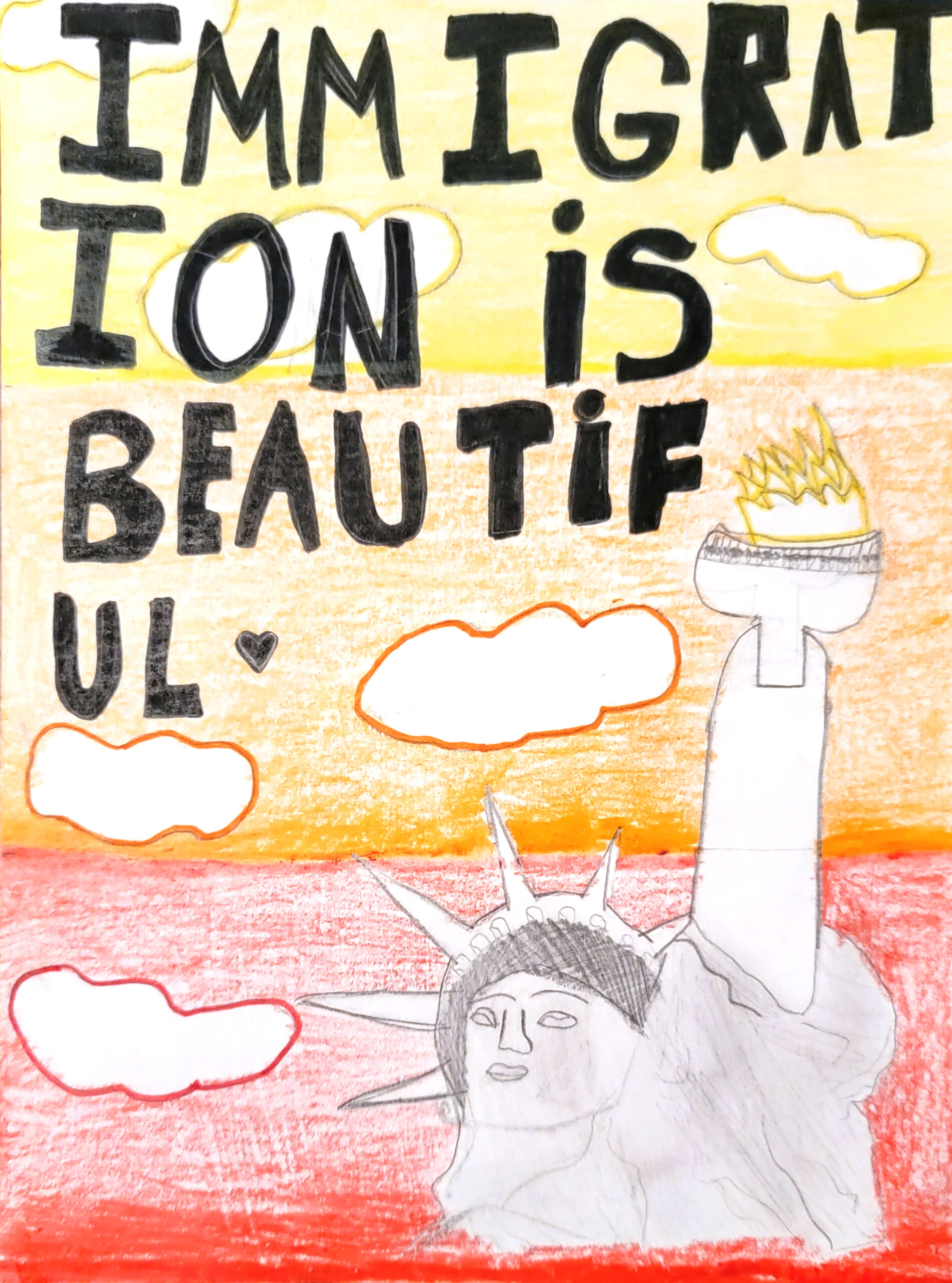
Luna, Holy Name School
These workshops included an introduction to the impressive artworks contained in Rutgers–Camden’s permanent collection. With many works restricted to the campus, the RCCA created mockup pieces that look like the originals, but were printed on canvas. These works were then curated into different themes, such as mathematics in art, covering linear perspective and patterns; language in art, such as narratives and storytelling; and cultural art.
Over the course of the project, the students were asked to think about the types of museums – for instance, science, history, and cultural museums – and consider where different kinds of exhibitions might be found. They were also encouraged to consider the different roles and jobs that they might take on, and their own skill sets and experiences, as they prepared for their exhibitions. Scott Garrity notes the incredible value of students learning how to start with a theme, then build and promote an exhibition.
“The goal is to bridge the theoretical that they learned last year to an understanding that this project is going to be a reality – an exhibition that people will actually visit,” she says. “They are seeing how the whole process works.”

